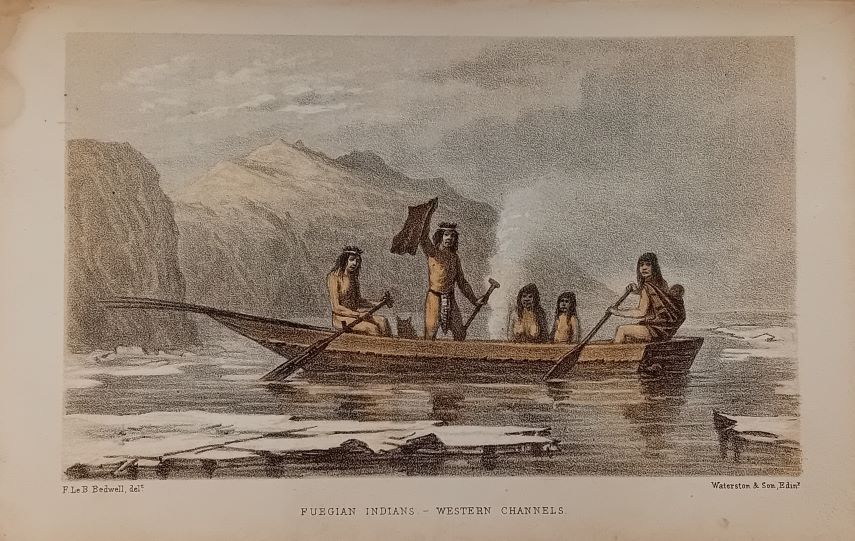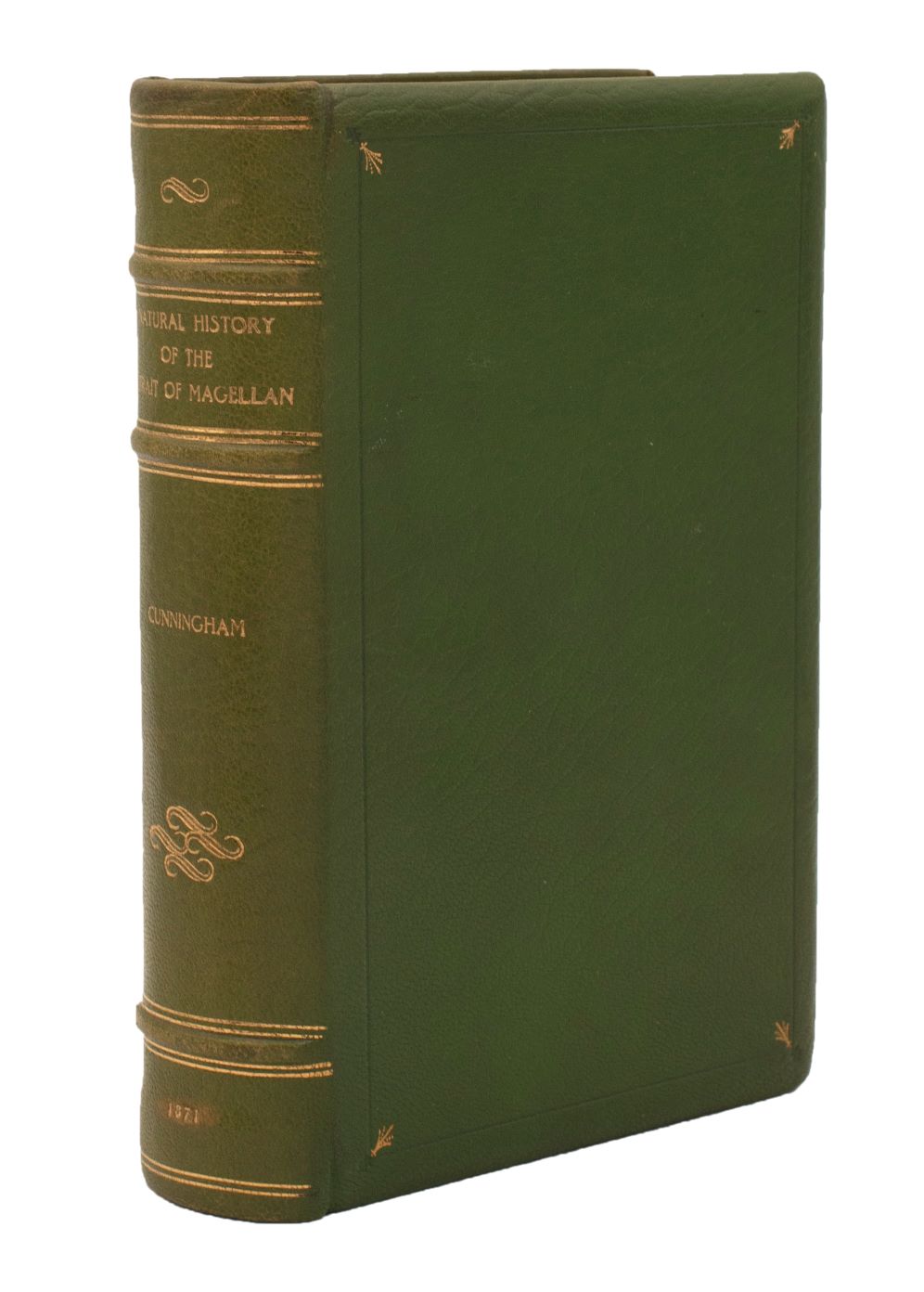

The Flora, Fauna, and Fossils of Patagonia in the Age of Darwin
CUNNINGHAM, Robert.
Notes on the Natural History of the Strait of Magellan and West Coast of Patagonia made during the Voyage of H.M.S. ‘Nassau’ in the Years 1866, 67, 68, & 69.
Edinburgh, Edmonston and Douglas, 1871.
8vo, pp. xvi, [2], 517, [1 (blank)]; half-title, 21 plates (some coloured), and 1 folding chart of Patagonia; browning, occasional small chips to fore-edges, some damp staining to plates, closed tears to map (repairs to verso), pp. 87-90 loose; overall good in twentieth-century green morocco, spine lettered and decorated in gilt; spine slightly sunned.

Added to your basket:
Notes on the Natural History of the Strait of Magellan and West Coast of Patagonia made during the Voyage of H.M.S. ‘Nassau’ in the Years 1866, 67, 68, & 69.
First edition of the travel account of Robert Oliver Cunningham (1841-1918), a Scottish naturalist employed aboard the H.M.S. ‘Nassau’ during a surveying expedition of the Strait of Magellan between 1866 and 1869.
Cunningham, who had only just become Professor of Natural History at the Royal Agricultural College, Chichester, was appointed to the position on the recommendation of the famous explorer and close friend of Darwin John Dalton Hooker (1817-1911), after the Admiralty asked Hooker – to whom this book is dedicated – if he could recommend two ‘high class naturalists’ for upcoming expeditions (Huxley, II, 80). The ’Nassau’ left Woolwich Dockyard in June 1866, and in the following years Cunningham noted down his observations from a number of exotic locations throughout Brazil, Chile, and Argentina. Readers fearful that they might share Darwin’s conclusion that Cunningham’s letters ‘are too full of plants for my taste’ (letter to Hooker, 2 September 1667), will be pleased to find, in addition to Cunningham’s excursions on botany, lengthy and fascinating descriptions pertaining to zoology, marine biology, palaeontology and anthropology, whether it be sightings of guanaco herds on the Patagonian shore to the discovery of fossils of the extinct Anoplotherium in the Gallegos river or a visit to the Chilean penal colony at Punta Arenas. Indeed, Cunningham’s work represents a vibrant insight into the seismic development of British geology, zoology, and botany in the era of global, scientific exploration and in the immediate years after the publication of Darwin’s most important works.
This first edition, compiled by Cunningham from his notes and published three years after his return in 1871, also features, in addition to a number of plates depicting such objects as insects, plants, and animal skulls, a map of Patagonia by the Scottish geographer and cartographer Alexander Keith Johnston (1804-1871) and illustrations by the Edinburgh-based firm of George Waterston & son.

